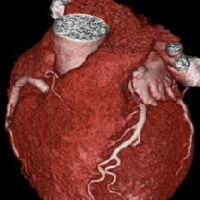Researchers analysed use of seven low-value clinical services in Choosing Wisely campaign and found notable declines in two services: the use of imaging for headaches and cardiac imaging in low risk patients. Their findings are reported in JAMA Internal Medicine.
One way to minimise healthcare costs is to reduce the use of unnecessary medical procedures and treatments. Choosing Wisely includes more than 70 lists of about 400 recommendations of frequently used medical practices or procedures that are of minimal clinical benefit to patients.
Abiy Agiro, PhD, of HealthCore, Wilmington, Del., and colleagues examined the frequency and trends of some of the earliest Choosing Wisely recommendations from 2012 using medical and pharmacy claims from Anthem-affiliated Blue Cross and Blue Shield healthcare plans for about 25 million members.
The researchers identified seven services: imaging tests for headache with uncomplicated conditions; cardiac imaging for members without a history of cardiac conditions; preoperative chest x-rays with unremarkable history and physical examination results; low back pain imaging without red-flag conditions; human papillomavirus (HPV) testing for women younger than 30; antibiotics for acute sinusitis; and prescription nonsteroidal anti-inflammatory drugs (NSAIDs) for members with select chronic conditions (hypertension, heart failure or chronic kidney disease). Their analysis showed:
Dr. Agiro's team acknowledges limitations because the study was based on administrative claims data that do not adequately capture the clinical circumstances that led to the service being ordered so the recommendation may be appropriate for an individual patient.
“The relatively small use changes suggest that additional interventions are necessary for wider implementation of Choosing Wisely recommendations in general practice. Some of the additional interventions needed include data feedback, physician communication training, systems interventions (eg, clinical decision support in electronic medical records), clinician scorecards, patient-focused strategies and financial incentives,” the study concludes.
Ralph Gonzales, MD, MSPH, and Adithya Cattamanchi, MD, MAS, of the University of California, San Francisco, have released a commentary on the study's findings: “As we have described, frameworks exist to guide delivery systems and clinician groups in developing and testing strategies to facilitate reducing the ordering of low-value tests and treatments. Further efforts to compel delivery systems to commit to Choosing Wisely are needed to leverage the grassroots/front-line cultural shifts that the campaign has stimulated before the impact wanes.”
Source: JAMA
Image credit: ChoosingWisely.org
One way to minimise healthcare costs is to reduce the use of unnecessary medical procedures and treatments. Choosing Wisely includes more than 70 lists of about 400 recommendations of frequently used medical practices or procedures that are of minimal clinical benefit to patients.
Abiy Agiro, PhD, of HealthCore, Wilmington, Del., and colleagues examined the frequency and trends of some of the earliest Choosing Wisely recommendations from 2012 using medical and pharmacy claims from Anthem-affiliated Blue Cross and Blue Shield healthcare plans for about 25 million members.
The researchers identified seven services: imaging tests for headache with uncomplicated conditions; cardiac imaging for members without a history of cardiac conditions; preoperative chest x-rays with unremarkable history and physical examination results; low back pain imaging without red-flag conditions; human papillomavirus (HPV) testing for women younger than 30; antibiotics for acute sinusitis; and prescription nonsteroidal anti-inflammatory drugs (NSAIDs) for members with select chronic conditions (hypertension, heart failure or chronic kidney disease). Their analysis showed:
- Declines in two services: imaging for headache (from 14.9 percent to 13.4 percent) and cardiac imaging (from 10.8 percent to 9.7 percent)
- Increases in use of NSAIDs (from 14.4 percent to 16.2 percent) and HPV testing in younger women (from 4.8 percent to 6.0 percent)
- Antibiotics for sinusitis remained stable decreasing only from 84.5 percent to 83.7 percent
- Use of pre-operative chest x-rays (ending utilisation 91.5 percent) and imaging for low back pain (53.7 percent utilisation throughout the study) remained high with no significant changes.
Dr. Agiro's team acknowledges limitations because the study was based on administrative claims data that do not adequately capture the clinical circumstances that led to the service being ordered so the recommendation may be appropriate for an individual patient.
“The relatively small use changes suggest that additional interventions are necessary for wider implementation of Choosing Wisely recommendations in general practice. Some of the additional interventions needed include data feedback, physician communication training, systems interventions (eg, clinical decision support in electronic medical records), clinician scorecards, patient-focused strategies and financial incentives,” the study concludes.
Ralph Gonzales, MD, MSPH, and Adithya Cattamanchi, MD, MAS, of the University of California, San Francisco, have released a commentary on the study's findings: “As we have described, frameworks exist to guide delivery systems and clinician groups in developing and testing strategies to facilitate reducing the ordering of low-value tests and treatments. Further efforts to compel delivery systems to commit to Choosing Wisely are needed to leverage the grassroots/front-line cultural shifts that the campaign has stimulated before the impact wanes.”
Source: JAMA
Image credit: ChoosingWisely.org
Latest Articles
healthmanagement, Choosing Wisely, cardiac imaging, low-value services, antibiotics, headaches, chest x-rays
Researchers analysed use of seven low-value clinical services in Choosing Wisely campaign and found notable declines in two services: the use of imaging for headaches and cardiac imaging in low risk patients. Their findings are reported in JAMA Internal M










